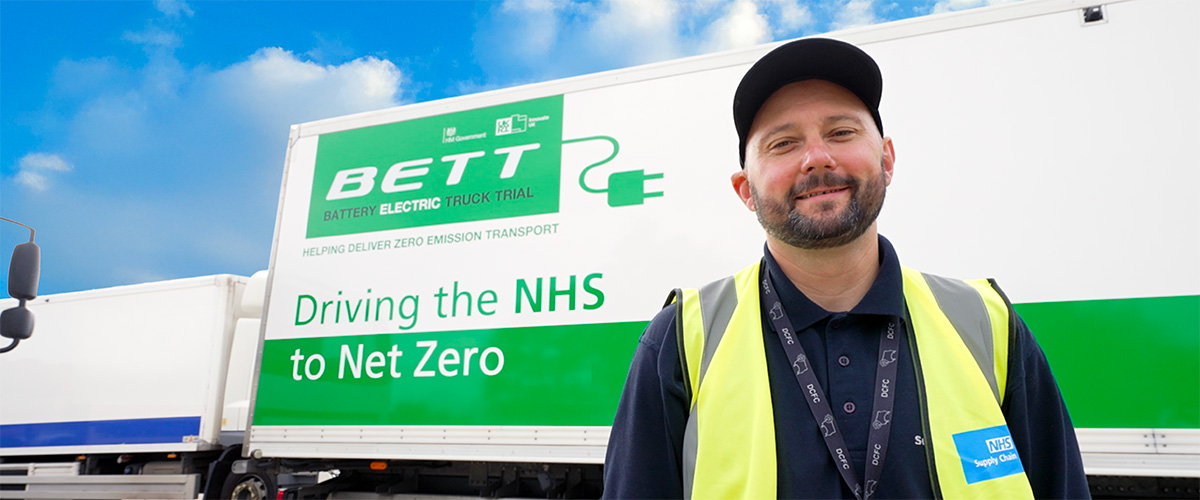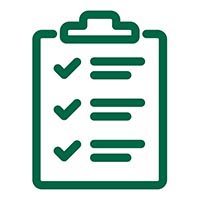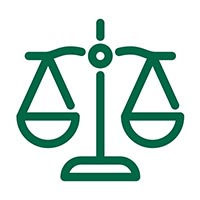
The Five Supplier Requirements

1 Carbon Reduction Plan

2 Social Value Requirements

3 Evergreen Assessment

4 Horizon Scanning

5 Modern Slavery
Carbon Reduction Plan
All suppliers of new contracts for goods, services, and works are required to publish a Carbon Reduction Plan (CRP) (PPN 06/21).
In this video Rosy covers the important topic of Carbon Reduction Plans, breaking it down into:
- What is required.
- What is changing.
- How it impacts you as a supplier.
Rosy Bennett, Sustainability Manager, explains our requirements in terms of Carbon Reduction Plans.
Commitment
We will confirm that the bidding supplier’s commitment to achieve net zero by 2050 or earlier for their UK operations is in place, as a minimum requirement.
Future Plans
Set out the environmental management in effect, including certification scheme or specific carbon reduction measures adopted: these should be measures the supplier can apply when performing the contract and support the supplier to achieve net zero by 2050 or earlier.
Sign Off
Sign off for all Carbon Reduction Plans:
- Must be board approved or company director approved if no board is in place.
- Must be clearly signposted and published on the supplier’s website.
- Must be updated regularly – at least annually as a minimum requirement.
Emissions data
Each supplier must provide data covering their current emissions for their UK operations for the sources included in scope 1 and scope 2 of the GHG Protocol, and a defined subset of scope 3 emissions. The five relevant GHG Protocol scope 3 categories are:
- Upstream transportation and distribution.
- Waste generated in operations.
- Business travel.
- Employee commuting.
- Downstream transportation and distribution.
Suppliers may provide additional categories of scope 3 emissions if the above categories are included and clearly identified. Emissions reporting should be provided in CO2e (carbon dioxide equivalent) for the seven greenhouse gases covered by the Kyoto Protocol*.
*The Kyoto Protocol covers emissions of carbon dioxide (CO2), methane (CH4), nitrous oxide (N2O), hydrofluorocarbons (HFCs), perfluorocarbons (PFCs), sulphur hexafluoride (SF6) and nitrogen trifluoride (NF3).
Evergreen Assessment
All Suppliers are required to complete an Evergreen Supplier Assessment.
In this video Rosy talks about this online tool, designed to:
- Standardise how we gather information across the health service and avoid duplication of requests.
- Store supplier information in a single location.
- Gain an understanding of progress towards more sustainable supply chain (rather than rank individual suppliers).
Launched in June 2023 by NHS England, this platform was created to streamline and simplify sustainability reporting within the NHS.
Rosy Bennett, Sustainability Manager, dives into the Evergreen Assessment process.
Levels 0-1
- No Level Awarded: Currently a large proportion of suppliers are in this category. As all suppliers are required to have a CRP, we would expect to see this move to Level 1 over the next year.
- Level 1: Publicly committed to net zero carbon and engaged with sustainability.
The goal is for all suppliers to reach Level 1 within the Evergreen Assessment tool by April 2026.
Levels 2-4
- Level 2: Comprehensive net zero targets and reporting for carbon emissions, with a structured approach to addressing modern slavery and driving social value.
- Level 3: 2045 net zero targets that are independently validated, and completion of the modern slavery assessment tool.
- Level 4: 2045 net zero targets, independently validated, across the global organisation, while actively taking steps to map supply chain or investigate and mitigate supplier risks of modern slavery.
Horizon Scanning
In this video, Rosy outlines how forward planning is an integral part of the NHS England Supplier Roadmap.
This roadmap sets out the steps suppliers must take to align with the NHS net zero ambition between now and 2030.
To be successful with horizon scanning the key questions include:
- What are the key developments in your industry or sector?
- Are there regulatory changes or predicted global changes that could influence your operations?
- Will any expected bans on plastics (or other materials) affect your strategies?
This approach demonstrates pro-actively preparing for change rather than reacting to it when it happens.
Rosy Bennett, Sustainability Manager, describes how the actions we take now we have a significant impact on the resilience of our supply chain in the years to come.
Health
- Design for Life
- NHS England Supplier Roadmap
Business
- Energy Strategy and Security
- Climate Adaptation
Environment
- Batteries
- Packaging
- Plastics
Modern Slavery
All suppliers must complete and maintain an up-to-date Modern Slavery Assessment Tool (MSAT) as a minimum requirement.
In this video Rosy provides detail on a number of key assessments in this vital area, including:
- Identifying risk and requiring risk assessments much earlier than ever before in the procurement process.
- Our alignment to the NHS England risk methodology to help us evaluate each framework and categorise risk into three levels.
- How requirements vary according to the risk category – low, medium or high.
Rosy Bennett, Sustainability Manager, describes the evolving approach we are taking to tackle modern slavery within NHS Supply Chain.
Approaches
- Understand the risk pre procurement at the framework level (low, medium, high).
- Deploy tools, with a relevant level of due diligence based on the potential risk at the tender stage (MSAT, further review, third party audit).
- Evaluate the responses to understand the specific risk associated with proposed suppliers (low, medium, high).
Tools to use
- Procurement risk = low
Tool to use: MSAT - Procurement risk = medium
Tools to use: MSAT and further review - Procurement risk = high
Tools to use: MSAT, further review and third party audit

Social Value
Since April 2022, all procurements must have a minimum weighting of 10% on social value.
In this video Rosy describes how we’re actively working to implement this requirement, including:
Our aim is to ensure that social value requirements remain both practical and impactful.
Rosy Bennett, Sustainability Manager, explains how Social Value is an essential aspect of public procurement.
Kick start economic growth
Make Britain a clean energy superpower
Take back our streets
Break down barriers to opportunity
Build an NHS fit for the future